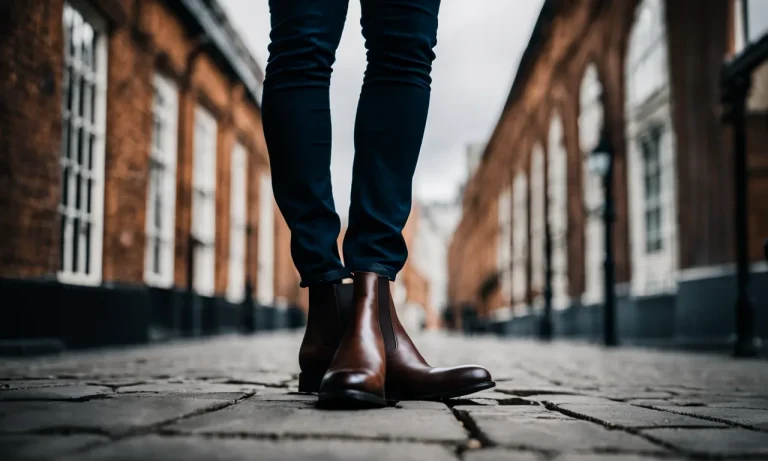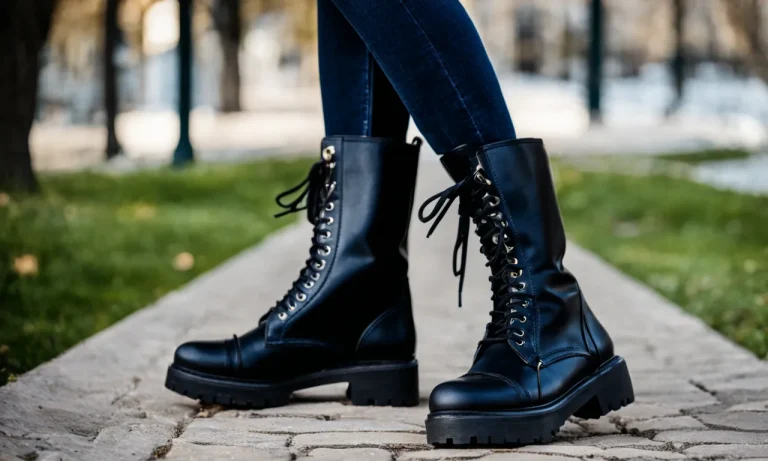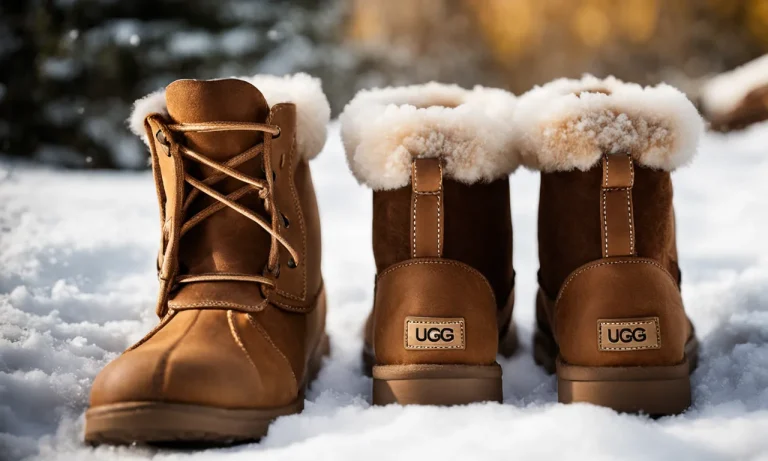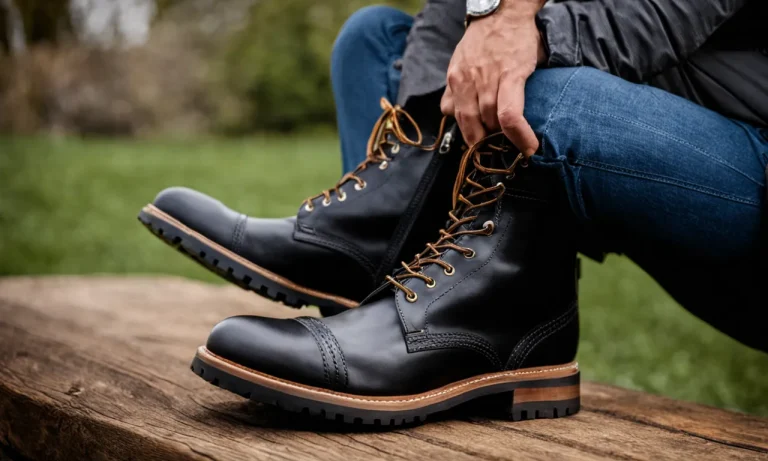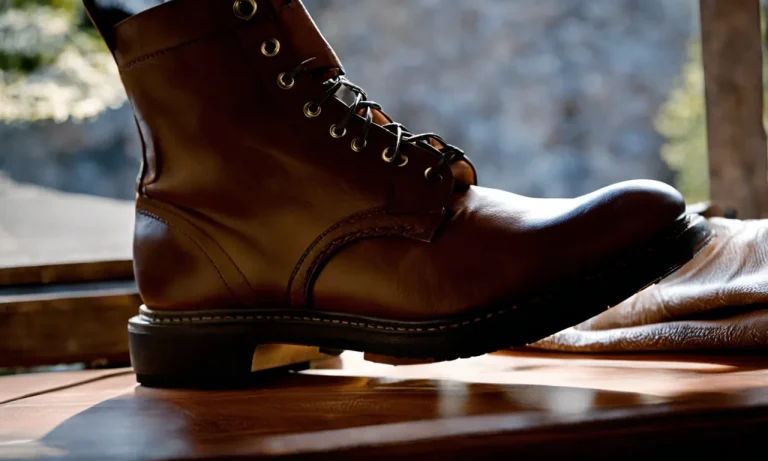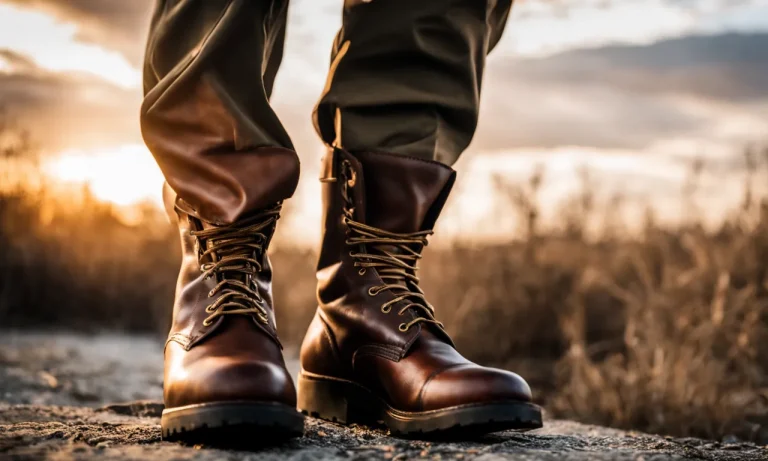Finding the right shoe size can be frustrating when the numbers don’t seem to match up across brands. But there’s actually a logical explanation for why shoe sizes vary—and understanding the key factors behind sizing differences is the secret to finding your perfect fit.
If you’re short on time, here’s a quick answer to your question: Shoe sizes differ across brands due to lack of standardization, different country sizing systems, variations in shoe shapes/widths, and inconsistencies in measurement methods.
But you can find your ideal size by analyzing your foot measurements, trying on multiple sizes, and sticking to brands with a good fit.
The History Behind Inconsistent Shoe Sizes
Understanding shoe size differences can be a perplexing task. The inconsistency in shoe sizes can be attributed to a variety of factors, including the absence of a universal sizing standard and the use of different measurement systems by various countries.
No Universal Sizing Standard
One of the main reasons for the inconsistency in shoe sizes is the absence of a universal sizing standard. Unlike other products such as clothing that generally follow standardized measurements, shoes do not have a globally recognized sizing system.
This lack of standardization can lead to confusion and frustration for consumers when shopping for footwear.
Each shoe manufacturer tends to develop their own sizing system, which may differ from their competitors. This means that a size 9 shoe from one brand may not fit the same as a size 9 shoe from another brand.
It’s important for consumers to be aware of this when purchasing shoes online or from different brands.
Different Measurement Systems By Country
Another factor contributing to the inconsistency in shoe sizes is the use of different measurement systems by various countries. For example, the United States uses the American (US) sizing system, while the United Kingdom uses the British (UK) sizing system.
These systems often have slight variations in their measurements, resulting in differences in shoe sizes.
Furthermore, some countries use different measurements for men’s and women’s shoes. For instance, in the United States, men’s shoe sizes are typically larger than women’s sizes. This further adds to the complexity of understanding shoe size differences.
It is worth noting that shoe sizes can also vary within a country due to regional differences or historical practices. For instance, a shoe manufacturer in one region may follow a slightly different sizing convention compared to another region within the same country.
Ultimately, understanding the history behind inconsistent shoe sizes can help consumers navigate the challenges of finding the perfect fit. It’s always recommended to refer to the brand-specific sizing charts and guidelines provided by the manufacturer to ensure a comfortable and accurate fit.
Key Factors That Impact Size Variations
When it comes to shoe sizes, there are several factors that can contribute to variations in fit. Understanding these key factors can help you make more informed choices when purchasing footwear. Two important factors that impact size variations are shoe shape and width and measurement methods.
Shoe Shape and Width
One of the main reasons why shoe sizes can differ is due to variations in shoe shape and width. Different shoe brands and styles have their own unique shapes and widths, which can affect how a shoe fits on an individual’s foot.
For example, a shoe with a narrow width may feel tight on someone with wider feet, while a shoe with a wide width may feel too loose for someone with narrow feet. It’s important to consider both the shape and width of a shoe when determining the right size.
Additionally, certain types of shoes, such as high heels or boots, may have different sizing guidelines compared to athletic shoes or sneakers. These variations in shoe design can impact how the shoe fits, so it’s essential to try on different styles and brands to find the most comfortable fit for your feet.
Measurement Methods
Another factor that contributes to size variations is the different measurement methods used by shoe manufacturers. While most countries use similar sizing systems, there can still be slight variations in the way measurements are taken.
For example, some brands may measure the length of a shoe from the tip of the toe to the back of the heel, while others may measure from the tip of the toe to the middle of the arch.
It’s also worth noting that the measurement methods used for different types of shoes may vary. For instance, running shoes may have different sizing guidelines compared to dress shoes. This is because the intended use and design of the shoe can impact how it fits on the foot.
To ensure the best fit, it’s advisable to measure your feet regularly and consult the sizing charts provided by shoe manufacturers. Additionally, trying on shoes in-store or ordering from retailers with flexible return policies can help you find the perfect fit.
Tips for Finding Your Perfect Shoe Size
When it comes to buying shoes, finding the perfect fit is crucial for comfort and overall foot health. Here are some useful tips to help you determine your ideal shoe size:
Get Your Feet Measured Properly
One of the biggest mistakes people make when buying shoes is assuming they already know their size. However, it’s important to remember that shoe sizes can vary between brands and even between different styles within the same brand.
Therefore, it’s highly recommended to have your feet measured by a professional at a shoe store. They will use a specially designed device called a Brannock Device to accurately measure the length and width of your feet.
By getting your feet measured, you can ensure that you start your shoe shopping journey on the right foot!
Try Shoes in Multiple Sizes
Once you have your measurements, it’s time to start trying on shoes. Don’t be afraid to try on multiple sizes, even if you think you already know your size. Remember, different shoe styles and brands may fit differently, so it’s always best to try on a few options to find the perfect fit.
When trying on shoes, make sure to walk around in them and check for any discomfort or tightness. Your toes should have enough room to wiggle comfortably, and the shoe should provide ample support for your arches.
Stick With Brands That Fit You Well
After experimenting with different sizes and styles, you may find that certain brands consistently fit you well. It’s a good idea to take note of these brands and stick with them for future shoe purchases.
This is because shoe sizes can vary slightly between brands, and finding a brand that consistently fits you well can save you time and frustration in the future. Additionally, some brands may offer different width options, which can be especially beneficial if you have wider or narrower feet.
Remember, finding the perfect shoe size is a personal journey, and it may require some trial and error. By getting your feet measured, trying on multiple sizes, and sticking with brands that fit you well, you’ll be well on your way to finding the perfect fit for your feet.
The Takeaway: Focus on Fit, Not the Number
When it comes to buying shoes, many people tend to get caught up in the numbers. They focus on the size printed on the label and assume that it will be a perfect fit. However, the reality is that shoe sizes can vary between brands, styles, and even individual shoes.
Instead of fixating on the number, it’s important to prioritize the fit of the shoe.
Why Shoe Sizes Differ
There are several reasons why shoe sizes differ. One factor is the measurement systems used by different countries. For example, the United States uses a different sizing system than Europe. Additionally, each brand may have its own unique sizing standards, resulting in variations even within the same country.
Another reason for the differences in shoe sizes is the shape and design of the shoe itself. Some shoes may have a narrow fit, while others might be wider. This variation in width can affect how the shoe fits, regardless of the numerical size.
The Importance of Trying Shoes On
Given the variations in shoe sizes, trying shoes on before making a purchase is crucial. It allows you to assess the fit and comfort firsthand. Remember, your feet are unique, and what works for someone else may not work for you.
When trying on shoes, pay attention to how they feel. Are they snug but not tight? Do your toes have enough wiggle room? Does the arch support feel comfortable? These are all important factors to consider when determining the right fit.
Getting the Right Fit
While sizes may vary, there are a few tips to help you find the right fit:
- Measure your feet regularly: Feet can change over time, so it’s important to measure them periodically.
- Consider width: If you have wider feet, look for shoes that offer a wider or “wide” option.
- Try different brands and styles: Don’t be afraid to experiment with different brands and styles to find what works best for you.
- Consult a professional: If you’re unsure about your shoe size or have specific foot concerns, consider visiting a shoe store with knowledgeable staff who can assist you.
Remember, the number on the shoe size label is just a starting point. It’s more important to prioritize comfort and fit when selecting the right pair of shoes. So, the next time you go shoe shopping, don’t get hung up on the number. Instead, focus on finding a shoe that feels great on your feet.
Conclusion
While inconsistent shoe sizing can be confusing, the most important thing is finding the size that fits your feet best—not fixating on size numbers. By understanding what causes size variations, getting your feet measured, and paying attention to how different sizes truly fit, you can cut through the clutter and find shoes that are comfortable and supportive for all-day wear.

